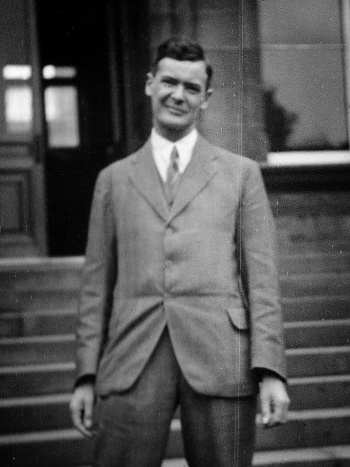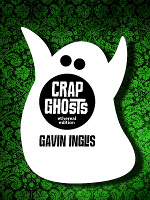Blog
Norman Dott
8th November 2017
One of the quiet heroes of Edinburgh healthcare.This year I’m working with the Department of Clinical Neuroscience at the Western General Hospital, to explore its practice and mark its transition to a new building at Little France. There are three Creative Fellows involved in this section of the programme. Susana Cámara Leret is the Design Fellow, Alex Menzies and Florence To are collaborating on the Music Fellowship, and I’m Language and Cognition Fellow.
As part of the Art and Therapeutic Design programme, this is not simply a writing job. My experiences so far have inspired several new short fiction pieces, which you may have heard at Flint and Pitch or EIBF Unbound this year. I have also been looking for a way to contribute to patient recovery, and such an opportunity has arisen for the remainder of the fellowship. More on this later.

One rich area has been the history of neuroscience in Edinburgh, which I unearthed through the case notes of Norman Dott. He was a compelling figure in many ways. After a motorcycle accident on Lothian Road sent him to hospital, Dott became so interested in the process of diagnosis and the patients around him that he turned to a career in surgery, where his mechanical skills were to find their place designing tools for the emerging field of neurosurgery. Before the Western General was constructed, Dott operated in Ward 20 of the old Royal Infirmary, directly under the clock tower you can still see from Lauriston Place.
With the writer’s eye, I notice the details that assemble his character: strict with his junior staff, but gentle and candid with his patients; regularly dealing with life-changing traffic accidents, but never losing his enthusiasm for a powerful car. His operations could take eight hours of exhausting attention, yet he always made his evening rounds of the ward; and first priority on Christmas Day was to take his family to the hospital to entertain the patients.
Reading the case notes is a fascinating and emotional experience. Dott describes each patient’s background, not just the signs and symptoms they present. The reader gets the sense of the character of the patient; gets to know them a little. Even without medical training, I can often follow Dott’s reasoning to a diagnosis, and the course of the subsequent operation. He logs the patient’s condition when safely returned to the ward, and it hits very hard when you flip the page to find an image covered in thin white paper — because these images are post-mortem photographs of that patient’s brain.
Dott maintained correspondence with many people whose lives he saved, years, even decades after they were discharged. Certainly there was an element of courtesy to these letters, but we can also see him working to build the emerging field of neuroscience — and it becomes clear he has retained the case notes of unsuccessful operations because there is something to learn from each.
I was pleased to discover that reading aloud was a feature of his upbringing, with a local link to a particular favourite, Robert Louis Stevenson. I cycled out to Spylawbank Road to get a sense of Dott’s beginnings. Here Norman constructed his 10-seater sledge, and would not send it plunging down the twisty corners of the icy Kirk Brae until every seat was occupied by a local child. It’s strange to see, in that childhood recklessness, the beginnings of the life path which would create a pioneering surgeon.
